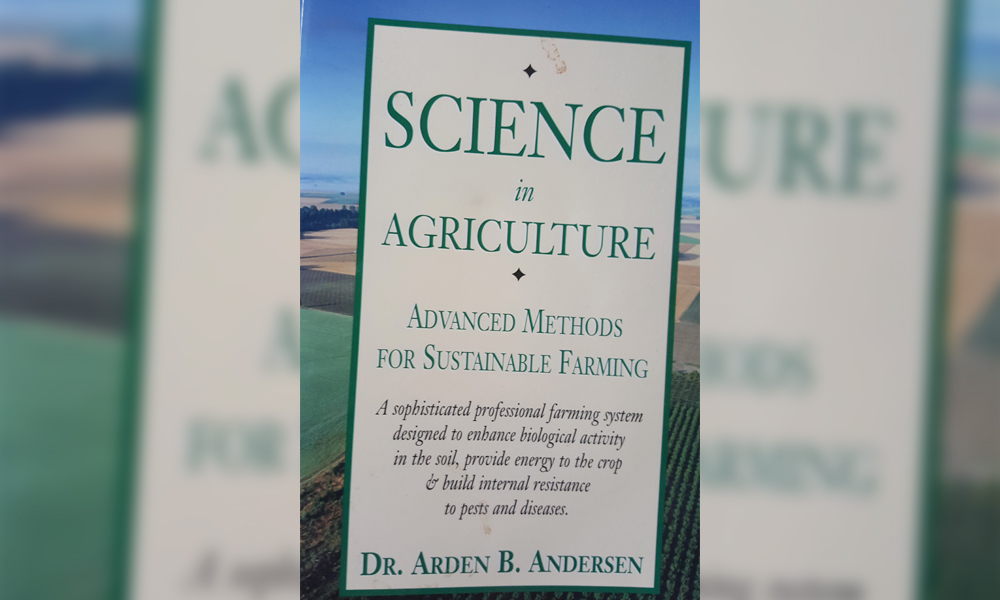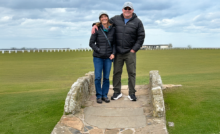A Must-Read for Golf Course Superintendents


With apologies to their fellow workers, golf course superintendents are the unquestioned intellectuals at most golf courses. After all, the majority of supers have graduated from intense four-year programs at top universities.
The great Byron Nelson said as much. “I think the job the golf course superintendents have done is the biggest improvement in golf today. The demands have caused it, yes, but also the education that the golf course superintendents have now in agronomy and such (is critical). What I like is that golf course management has become so good universally.”
Golf course architect Robert Trent Jones, Jr., notes: “To golf course superintendents around the world I owe a great debt, and every architect owes a great debt. We can only continue to provide these great golf facilities with well-educated professionals to maintain them.” And some golf course superintendents make maintenance work look fun.
And, in Golf Magazine, the game’s iconic Arnold Palmer observed: “The Golf Course Superintendents Association of America and all golf course superintendents are probably the most important single entity that we have in golf. . . . The conditions and the golf course’s beauty, the environment, the wetlands, everything depends on their perseverance and their knowledge and the work that they do to maintain the golf courses.”
Among the more than 100 American colleges offering turfgrass management programs are such prestigious universities as Penn State, Rutgers, Washington State, Oklahoma State, Michigan State, Texas A&M, and the University of Minnesota. The curriculum at these institutions is quite rigorous, involving Plant Sciences, Integrated Pest Management, Agronomy, Horticulture, Business Management, and more. There’s not an easy “A” in the bunch.
The reason for this is that the golf course superintendent’s daily duties require myriad technical know-how as they address areas on their golf course related to mathematics, botany, biology, soil, and turfgrass sciences, irrigation and drainage systems, plant physiology and propagation, accounting, and financial golf course management, computer science, statistics, and communications.
Related: Golf Course Superintendents Drive Environmental Accountability
All these disciplines are in play as the golf course superintendent copes with the vagaries of weather, water, and soil pH, large and small pests, massive foot traffic on fragile surfaces, staff, governmental guidelines, zealous environmentalists, conflicting members’ opinions, and assorted “X” factors too numerous to mention here.
So it’s clear why golf course superintendents are the “brains” behind golf courses (again, apologies to their co-workers, many of whom also boast four-year college degrees).
As with any science-based trade, there are reference books that serve as the backbone of a golf course superintendent’s knowledge. There are plenty of opinions about the “best” books in the incredibly vast library of turf and agronomy titles. But, due to space limitations, here are a few selections as the most important books in the turfgrass trade.
Of his two choices, Larry Gilhuly, USGA Green Section Agronomist: “I’d say an old book and a new book. The newer one is Turf Management for Golf Courses by James Beard. The older (and very rare) book is by Dr. Charles V. Piper and Dr. Russell A. Oakley called Turf for Golf Courses.
“The book by Beard is generally considered the industry ‘Bible’ as it contains virtually everything concerning golf course management in its 700-page second edition, published in 2002. It was edited by the USGA Green Section staff. Dr. Beard has been considered the authority on turfgrass for the many decades he was involved at both Michigan State and Texas A&M.
“The book by Piper and Oakley is considered a ‘treasure’ due to it being the first-ever written on golf course turf at a time (the early 1900s) when turf management was in its infancy. Most of their principles were written a century ago, yet still, apply today. Piper and Oakley were also the pioneers of the USGA Green Section when it was formed in 1920.”
Kimberly S. Erusha, Ph.D., Managing Director of the USGA Green Section: “The USGA Green Section Record – this publication is timely, based on field experience and science, and provides helpful information not only to the golf course superintendent but also gives auxiliary materials to assist golf course superintendents in communicating agronomic information to golfers.
“Another is Turf Management for Golf Courses. This is a basic primer about all things in golf course management. It’s a good starter reference when researching topics.”
Related: New Book Helps Golf Course Superintendents & Green Committees
Dr. Erusha also cites the Turfgrass Information File (a joint venture of the USGA and Michigan State – www.tic.msu.edu/tgif) as an important tool for golf course superintendents. “While not a book, this is a world-class resource for turfgrass information.”
David Phipps, GCSAA Field Staff’s Northwest Regional Representative: “The ‘Bible’ of turf management, which everyone should have, is Turf Management for Golf Courses by James Beard.
“I also recommend The Color Atlas of Turfgrass Diseases by Kazuya Akimitsu, Toshikazu Tani and Beard, which is known for its great photography. The Science in Agriculture by Dr. Arden B. Anderson is my new go-to book. Though more about agriculture, the book leads to a more sustainable approach in turfgrass management.”
Online sources are readily available and widely used on a daily basis. Steve Kealy, the golf course superintendent at Glendale Country Club in Bellevue, Wash., says he visits these websites regularly.
“National Weather Service (www.weather.gov) is my go-to site for what’s going to happen tomorrow. Everything we do on the course is related to the upcoming weather. USGA Green Section (www.usga.org) has a lot of great articles on file written by the USGA agronomists. And Turfnet (www.turfnet.com) is a good resource to see what other superintendents are doing around the country. A good source for products and services is Golf Course Trades Directory (directory.golfcoursetrades.com).
“I frequently use Michigan State University Extension (www.msu.edu),” adds Kealy, a past recipient of the GCSAA’s President’s Award for Environmental Stewardship. “It has more articles about dealing with turf diseases and nutrition. I occasionally reference the USGA Green Section Record monthly magazines that go back to the 1920s. History repeats itself if you’re around long enough. And I visit the University of Wisconsin-Madison Turfgrass Science (www.turf.wisc.edu) GDD Maps for annual bluegrass seedhead suppression and plant-growth regulator re-application intervals.”
In addition to these books and associated websites, golf course superintendents are kept abreast via bulletins and newsletters by their state and regional turfgrass associations that discuss local issues, such as regulatory changes, watering practices, pesticide use, and the like.
Linda Parker writes a Minnesota golf course superintendent described his job as “growing grass for a living.” in her recent article “Golf Course Superintendents: Embracing Change and Growing the Game“.
Jeff Shelley has written and published nine books as well as numerous articles for print and online media over his lengthy career. Among his titles are three editions of the book, “Golf Courses of the Pacific Northwest.” The Seattle resident was the editorial director of Cybergolf.com from 2000-15. For seven years he served as the board president of First Green, an educational outreach program that is now part of the Golf Course Superintendents of America and Environmental Institute for Golf.
Recent Posts
Memphis Country Club: A Golfer’s Study in Precision and Tradition
If you have ever teed it up at Memphis Country Club, you know this isn’t…
Foley Company attains GCSAA Silver Partner Status
Foley Company, a leader in turf equipment innovation and technology, affirms its support of the…
Harrell’s continues longstanding support of the GCSAA Foundation
Harrell’s LLC, a leading distributor of customized agronomic products for turfgrass since 1941, has donated…
City of Orlando Announces New State-of-the-Art Driving Range at Dubsdread Golf Course
The City of Orlando is excited to announce the construction of a brand-new, state-of-the-art driving…
Discover Puerto Rico for Great Golf Trips and After-Round Activities, Amenities
Golfers cannot live by the game alone which is why Puerto Rico provides the perfect…
Q&A with a Multi-talented Golf Course Architect – Part 2: Making the Rounds – Installment 39
This column features recollections of the author’s 37 years as a golf writer. These installments…


